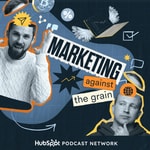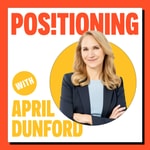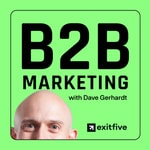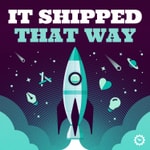Enterprise Product Leadership – Details, episodes & analysis
Podcast details
Technical and general information from the podcast's RSS feed.
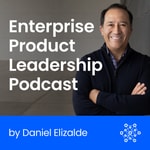
Enterprise Product Leadership
Daniel Elizalde
Frequency: 1 episode/26d. Total Eps: 53

Recent rankings
Latest chart positions across Apple Podcasts and Spotify rankings.
Apple Podcasts
🇨🇦 Canada - management
11/10/2024#76
Spotify
No recent rankings available
Shared links between episodes and podcasts
Links found in episode descriptions and other podcasts that share them.
See allRSS feed quality and score
Technical evaluation of the podcast's RSS feed quality and structure.
See allScore global : 73%
Publication history
Monthly episode publishing history over the past years.
053: Cybersecurity for Industry 4.0: the good, the bad and the ugly, with Rob Dyson
Season 2 · Episode 53
mardi 26 octobre 2021 • Duration 34:43
In this episode of the Enterprise Product Leadership podcast, join me as I chat with Rob Dyson about the importance of cybersecurity in Industry 4.0.
Episode details: Cybersecurity in Industry 4.0: the Good, the Bad, and the Ugly, with Rob Dyson
I have a fascinating show for you today. My guest is Rob Dyson. Rob has decades of experience in the security space, and he is currently the Global OT and IoT Security Services Business Development Leader at IBM!
In this episode, Rob and I had a wide-ranging conversation about the impacts of cyber security in Industry 4.0 transformations, including:
- How cybersecurity can derail an Industry 4.0 transformation
- What is driving cybersecurity risks in Manufacturing
- How companies can create a culture of cybersecurity
- And much more
This is my second episode in collaboration with IBM, and it is an information-packed episode that no product leader should miss!
About Rob Dyson
With more than 30 years of experience in the Information Technology field, Rob Dyson has held technical and leadership positions while providing IT services for many companies within multiple industries. Rob is currently the Global OT/IoT Security Services Business Leader within IBM's Global Security Services practice. He is responsible for building, operating, and maturing our OT/IoT security business to help companies mitigate their OT & IoT cyber risks.
- Rob has experience gained from serving some of the largest global companies in multiple industries. He has served as the Client Executive for some of IBM's most strategic clients.
- Prior to this role, Rob served as the Global SSRC (Security, Strategy, Risk & Compliance) Competency Leader whereby he was responsible for developing unique and relevant solutions to assist clients in improving the effectiveness and efficiency of their information security program. This includes designing solutions to establish relevant information security strategies, comprehensive IT governance processes, redesigning security organizations, effective security policy management and governance processes, and compliance with leading security standards/frameworks and regulations. In addition, Rob has been at the forefront of delivering leading IT GRC solutions based on market-leading IT GRC applications such as OpenPages ITG, RSA Archer, and SAP GRC.
- Prior to joining IBM, Rob held senior leadership positions at Accenture as the Global Leader for Application & Infrastructure Security Services; at Deloitte as the Mid-America Region Leader for Security Services; at Electronic Data Systems (EDS) in positions of escalating responsibility providing IT professional services; and as an Officer in the U.S. Army where at the rank of Captain he was in charge of the 82nd Airborne Division Data Center Operations.
- Rob is an active CISSP and has a Bachelor of Science degree in Information Systems Management from Missouri State University in Springfield, Missouri.
To learn more about Rob Dyson and IBM's approach to cybersecurity in Industry 4.0
- Rob Dyson on LinkedIn
- IBM
- Monitor and secure industrial operations
- ABB and IBM Bolster cybersecurity for industrial operations
- Make cybersecurity a core element of your Industry 4.0 roadmap
- Learn how Industry 4.0 technologies are changing Manufacturing
- Get started with the visibility of your OT & IT assets
Want to learn more?
- Sign up for my newsletter at danielelizalde.com/join for weekly advice and best practices directly to your inbox!
- Visit danielelizalde.com/podcast for additional information, show notes, and all episodes.
- Subscribe on Apple Podcasts, so you don't miss out on any of my conversations with Product and Thought Leaders!
052: Why Edge and AI hold the key to scaling Industry 4.0 with Jose Favilla
Season 2 · Episode 52
mardi 5 octobre 2021 • Duration 52:04
I have a fascinating show for you today that is part of my collaboration with IBM. My guest is Jose Favilla. Jose leads the global Industry 4.0 initiatives for IBM. And with over 30 years of experience in the field, Jose gives us a masterclass on Industry 4.0, including where it started, how it has evolved, where it is today, and where it is going
Tuning in, you'll hear the importance of edge and AI in driving the value of industry 4.0, how this technology enables companies to predict and prevent failures from occurring, and how companies can use the power of AI to improve the maintenance, quality, and efficiency of manufacturing plants significantly.
In this episode, Jose and I discuss:
- The importance of Edge and AI in driving the value of Industry 4.0
- How to scale your Industry 4.0 initiatives
- How to select the best vendor for your digital transformation
- And much more.
About Jose Favilla
Jose Favilla leads Industry 4.0 at IBM. His 30+ years of extensive experience working with clients in over 30 countries helps them improve operational and business performance.
Jose has accumulated an in-depth understanding of the asset-intensive industries, including natural resources, processes, and discrete manufacturing.
Over his career, he has applied advanced analytics, optimization, AI, IoT, and Blockchain technologies to drive innovation. He has had the privilege of working with leading clients around the world to create new approaches and technologies to solve their complex business and operations problems.
Jose has been recognized as one of the top industry experts at IBM and was invited to be a member of the inaugural class of the IBM Industry Academy in 2011. Jose has chaired and spoken in numerous conferences around the world and published extensively and has won several awards in recognition of my achievements. He mentors new talents, MBA students at the leading US universities, and CEOs.
To learn more about Jose Favilla and IBM's Industry 4.0
- Jose's LinkedIn profile
- Learn about IBM's approach to Industry 4.0
- [Video] Manufacturers are using AI on a hybrid cloud with IBM
- [Interactive] Industry 4.0 scalability and flexibility
- [White paper] Industry 4.0
- [Article] How the convergence of OT and IT is driving Industry 4.0
- Additional case studies for Industry 4.0
Want to learn more?
- Sign up for my newsletter at DanielElizalde.com/Join for weekly advice and best practices directly to your inbox!
- Visit DanielElizalde.com/Podcast for additional information, show notes, and all episodes.
- Subscribe on Apple Podcasts, so you don't miss out on any of my conversations with Product and Thought Leaders!
043: Product Research Rules with C. Todd Lombardo
Season 2 · Episode 43
mardi 20 avril 2021 • Duration 41:21
Getting to know your customer’s pains is one of the biggest challenges of building enterprise software. Joining me to take a deep dive into this topic is my good friend and return guest, C. Todd Lombardo.
As the VP of Product & Experience at Openly, an insurance-tech startup, C. Todd is a seasoned product leader in the B2B space with a ton of experience leading in-house product teams to success. He has also written two of my favorite product books: Product Roadmaps Relaunched: How to Set Direction while Embracing Uncertainty, and, of course, his newest book, Product Research Rules: Nine Foundational Rules for Product Teams to Run Accurate Research that Delivers Actionable Insight.
In this episode, C. Todd and I discuss topics based on three of the nine product rules included in his newest book, Product Research Rules: 1) How to align your team/s on the right question/s to research 2) How to plan research in a B2B context & 3) Why it is essential to share your findings throughout the innovation process.
Episode Details: Product Research Rules with C. Todd Lombardo:
“Start with the problem first; Don’t start with the solution or the technology.” — C. Todd Lombardo
About C. Todd Lombardo:
Data nerd. Design geek. Product Fanatic. Product-guy who believes “product” is not the right fit for today's data-driven, experiential world. C. Todd focuses on building and mentoring teams in areas of user experience design, product management, and product strategy. Currently, he is the VP of Product & Experience at Openly, an insurance-tech startup.
In addition to leading in-house product teams to success, C. Todd has worked as a design and product strategy consultant for notable clients such as TripAdvisor, LogMeIn, Spotify, New York Times, BBVA, FedEx, Lowes, and Genentech. Additionally, he serves on the adjunct faculty at Madrid's IE Business School and Baltimore's Maryland Institute College of Art (MICA), where he teaches graduate-level courses in design, innovation, and data visualization.
Topics We Discuss in this Episode:
- Todd’s career background and experience in various product roles
- About his newest book, Product Research Rules: Nine Foundational Rules for Product Teams to Run Accurate Research that Delivers Actionable Insight
- What you need to know to build a product that solves the problem(s) of your customers or users
- How to conduct research to fully understand what the problem is that you’re trying to address with the product you are creating
- What some of the key product rules are and how you can leverage them to drive you and your team forward
- Key insights and examples on “Rule #3: Good insights start with a question.”
- How to align your team as a leader so they can discover the right questions to ask and research (and get the executive team, management, and stakeholders on board too)
- Examples of how to create solutions for problems your customers are actually having
- Key insights and examples on “Rule #4: Plans make research work.”
- How to access/communicate with your customers in a B2B environment
- The critical role that the product leader plays in enabling their team to feel empowered
- Key insights and examples on “Rule #8: Insights are best shared”
- The importance of good user experience and a good product that fills a need and isn’t just a solution in search of a problem
Product Leader Tip of the Week:
When it comes to product research, you need to ask simple questions — then listen. The ability to ‘dig in’ and then know when to listen is crucial! Don’t wait to speak. Instead, listen to what somebody is saying and then respond.
And don’t forget: be humble if you’re wrong.
To Learn More About C. Todd Lombardo:
- Todd Lombardo’s LinkedIn
- Product Research Rules: Nine Foundational Rules for Product Teams to Run Accurate Research that Delivers Actionable Insight, by C. Todd Lombardo and Aras Bilgen
- Product Roadmaps Relaunched: How to Set Direction while Embracing Uncertainty, by C. Todd Lombardo, Bruce McCarthy, Evan Ryan, and Michael Connors
- Openly
Related Resources:
- Enterprise Product Leadership Episode 27: “How to Define a Clear IoT Vision” with C. Todd Lombardo
- danielelizalde.com/Template — Download Daniel’s free IoT Product Strategy Template here!
Want to Learn More?
- Sign up for my newsletter at danielelizalde.com/Join for weekly advice and best practices directly to your inbox!
- Visit danielelizalde.com/Podcast for additional information, show notes, and episodes.
- Subscribe on Apple Podcasts so you don’t miss out on any of my conversations with product and thought leaders!
042: How Great Positioning Leads to Great Roadmaps (and Not the Other Way Around) with April Dunford
Season 2 · Episode 42
mardi 6 avril 2021 • Duration 41:57
My guest today is April Dunford, a Product Marketing and Positioning expert. She’s also the author of the best-selling book, Obviously Awesome: How to Nail Product Positioning so Customers Get It, Buy It, Love It. She is also the founder and CEO of Ambient Strategy, a boutique consulting firm that specializes in positioning for technology companies.
In this episode, we discuss how positioning is a crucial element of every product and how bad positioning can have a devastating effect on your roadmap. We talk about the benefit of product management working closely with product marketing (especially at the beginning of the innovation journey), how companies should implement and execute their positioning strategy, and how to begin to create a cohesive product strategy that can generate value and money.
This is a fun and insightful episode that no product leader should miss!
Episode Details: How Great Positioning Leads to Great Roadmaps (and Not the Other Way Around) with April Dunford:
“One of the first things I teach people is that everybody’s got to own positioning. … Because positioning impacts everything we do. It’s going to impact what we’re doing in product, it’s going to impact what we’re doing in sales, in marketing, … customer success — it impacts a lot of things.” — April Dunford
About April Dunford:
April is an experienced startup executive with a deep interest in how companies bring new offerings to market and get them into the hands of customers that are willing to pay for them. She has deep expertise in market positioning and has launched 16 products into the market. She has experience in creating new markets, expanding markets, and positioning new products in existing established markets.
April has held executive roles in a series of successful startups as CEO, COO, VP Marketing, and VP Marketing and Sales. She has also held executive roles at global companies such as IBM, where she launched and grew a new product division.
Additionally, April is the CEO of Ambient Strategy, a boutique consulting firm that specializes in positioning for technology companies. Through this, she has worked with over 200 companies across the globe, helping them grow faster by ensuring their offerings are clearly differentiated in the market.
Topics We Discuss in this Episode:
- About April’s career background and the work that she does today
- About her book, Obviously Awesome: How to Nail Product Positioning so Customers Get It, Buy It, Love It
- The impetus of what got her interested and invested in positioning
- Why positioning is so fundamentally important for the marketing of your product
- The differences between market categories vs. trends (and what makes good ones vs. bad ones)
- Why you don’t have to be trendy in order to sell product
- How to create a cohesive product strategy that can generate value and money
- How to better structure the relationship between product management and product marketing
- The scope that positioning covers and why everyone needs to be involved
- Key components of positioning and what you need to consider as a product leader
- How to have conversations about positioning on all levels of the organization
- How to mitigate positioning challenges before they happen
- How to get your whole organization aligned with the positioning
- How to execute on your positioning throughout the lifecycle of your roadmap
- Advice for leaders who are new at defining and executing a positioning strategy
Product Leader Tip of the Week:
You have to create your positioning strategy deliberately. A good product leader should be open to the idea that there are other ways to contextualize what they do beyond databases. You also need to have a structured process. If it is not structured, you will not be able to get a good result.
To Learn More About April Dunford:
- April Dunford’s LinkedIn
- Ambient Strategy
- Obviously Awesome: How to Nail Product Positioning so Customers Get It, Buy It, Love It, by April Dunford
Related Resources:
- com/Template — Download Daniel’s free IoT Product Strategy Template here!
Want to Learn More?
- Sign up for my newsletter atcom/Join for weekly advice and best practices directly to your inbox!
- Visit com/Podcast for additional information, show notes, and episodes.
- Subscribe on Apple Podcasts so you don’t miss out on any of my conversations with product and thought leaders!
041: How to Create Clarity and Alignment across your Organization with Stefano Mastrogiacomo
Season 2 · Episode 41
mardi 23 mars 2021 • Duration 51:09
Throughout the life of the Enterprise Product Leadership podcast, I’ve had critical conversations on many product leadership topics such as driving a data strategy with Bill Schmarzo, how to test business ideas with David Bland, how to drive innovation with Geoffrey Moore, and much more. All of these topics are very important for product leaders but there’s one key ingredient that’s missing: the human element of alignment and collaboration.
The role of a leader is to ensure everybody is aligned and can contribute to the vision of the product and the company. Without that alignment, there’s no technology, business model, or data strategy that matters.
That is why I’m so excited to be joined by Stefano Mastrogiacomo on the show today. Stefano is a management consultant, professor, and author. His book, High-Impact Tools for Teams: 5 Tools to Align Team Members, Build Trust, and Get Results Fast, is the missing manual to achieve and maintain alignment throughout the life of your product.
From a leadership perspective, this is probably one of the most important episodes I’ll ever publish. I hope you enjoy the conversation as much as I did!
Episode Details: How to Create Clarity and Alignment across your Organization with Stefano Mastrogiacomo:
“Alignment is not easy. It’s not an easy process. Especially when we have different backgrounds, different priorities, etc. So there has to be some initial starting point on which we all converge, regardless of where we come from.” — Stefano Mastrogiacomo
About Stefano Mastrogiacomo:
Stefano Mastrogiacomo a management consultant, professor, and author. He is passionate about human coordination and he is the designer of the Team Alignment Map, the Team Contract, the Fact Finder, and the other tools presented in this book. He has been leading digital projects and advising project teams in international organizations for more than 20 years while teaching and doing research at the Universities of Lausanne, Switzerland. His interdisciplinary work is anchored in project management, change management, psycholinguistics, evolutionary anthropology, and design thinking.
Topics We Discuss in this Episode:
- Stefano Mastrogiacomo’s career background and journey
- How and why Stefano originally discovered the importance of alignment
- Why you need to focus on alignment and coordination in order to get anything done as a leader
- The key message of Stefano’s book, High-Impact Tools for Teams: 5 Tools to Align Team Members, Build Trust, and Get Results Fast
- The creative journey of writing his book
- Why alignment is crucial to driving innovation
- Key principles in coordination and alignment
- How Stefano recommends approaching the task of alignment between multiple departments as a product leader
- About the Team Alignment Tool how it helps structure an alignment conversation that creates mutual clarity
- Why understanding the mission is the first step to achieving alignment (and how to effectively create a mission with clarity)
- The human side of the innovation journey
- The four key requirements for human coordination
- What co-planning is and how it enables coordination in your organization
- How to address resistance towards change
- What you need to address to achieve alignment and coordination in order to have a successful innovation journey
- Key components that make the execution journey more smooth
- The challenges of coordination and how to address them
- How to foster a more collaborative and communicative team
- How to address common challenges around human coordination
- The similarities and differences between achieving alignment in small vs. large organizations
- Common challenges that leaders will face in implementing collaboration tools in their organizations (and how to overcome them)
- Stefano’s project roadmap and future goals
Product Leader Tip of the Week:
Stefano recommends going to Strategyzer.com or TeamAlignment.co. and downloading their toolkit. Start experimenting on your projects today! If you would like examples, be sure to check out Stefano’s book, High-Impact Tools for Teams.
To Learn More About Stefano Mastrogiacomo:
- Stefano Mastrogiacomo’s LinkedIn
- The Team Alignment Co.
- High-Impact Tools for Teams: 5 Tools to Align Team Members, Build Trust, and Get Results Fast, by Stefano Mastrogiacomo, Alexander Osterwalder, Alan Smith (designer), and Trish Papadakos (designer)
Related Resources:
- https://danielelizalde.com/Template — Download Daniel’s free IoT Product Strategy Template here!
- 32: “The Economic Value of Data with Bill Schmarzo”
- 33: “How to Test Business Ideas with David Bland”
- 37: “Crossing the Chasm: How to Effectively Drive Innovation with Geoffrey Moore”
- 38: “Is 5G Worth It? with Rob Tiffany”
- The Strategyzer Book Series
- Strategyzer
Want to Learn More?
- Sign up for my newsletter athttps://danielelizalde.com/Join for weekly advice and best practices directly to your inbox!
- Visit danielelizalde.com/Podcast for additional information, show notes, and episodes.
- Subscribe on Apple Podcasts so you don’t miss out on any of my conversations with product and thought leaders!
040: How to partner with startups to fuel your innovation with Haven Allen
Season 2 · Episode 40
mardi 9 mars 2021 • Duration 37:50
Launching software products to market is very hard. But adding a hardware component makes it 10 times harder. Not only do you have the typical product and market challenges of software, but you also have the complexity of building a physical product, which can take a long time; it’s capital intensive, it might require specialized equipment, and it requires access to a supply-chain network you might not be a part of.
This is why I’m so excited to be joined by my guest today, Haven Allen! Haven is the CEO of mHUB; a startup accelerator focusing on hardware and software products — or, as Haven calls them — hard-tech.
In our conversation, we discuss the complexities of bringing hard-tech products to market, the role that accelerators like mHUB play in this space, and how large companies should engage with startups to create a win-win partnership. Additionally, we also discuss the impact of COVID-19 in accelerating the innovation cycle of many industries including Healthcare, Energy, and Manufacturing.
Whether you work at a hard-tech startup or at an enterprise that interacts with hard-tech startups, this is a fantastic episode that no Product Leader should miss!
Episode Details: with Haven Allen:
“There are these great ideas out there and they just need a little bit more support, a little bit more capital, [and] stronger connections with industry to really accelerate their teams.” — Haven Allen
About Haven Allen:
Haven Allen, Chief Executive Officer and co-founder of mHUB, is an entrepreneur and technology strategist who most recently concentrated on growing the manufacturing industry and strengthening its community throughout Chicagoland.
As an economic development strategist at World Business Chicago, he directed the Advisory Council for Chicagoland Manufacturing through which he established and led the implementation of an economic development agenda to support growth and job creation in the manufacturing sector. During his graduate education, Haven served as a Mayoral Fellow at the City of Chicago. As a fellow, he provided research and analysis on policy initiatives dealing with infrastructure, electricity markets, and municipal marketing.
Topics We Discuss in this Episode:
-
About Haven Allen’s background in tech
-
About mHUB and Allen’s role as a CEO
-
What “hard-tech” is
-
Hard-tech startup best practices
-
How mHUB leadership developed and shaped a robust venture capital ecosystem
-
Haven’s insights on solving substantial problems in the advanced manufacturing space
-
The holistic approach that Haven takes as CEO of mHUB
-
How COVID-19 is impacting startups in the hard-tech industry
-
mHUB’s business model and how it has enabled the different stages of the lifecycle to get to pilot and beyond
-
mHUB’s roadmap and how they’re working toward creating more opportunities and jobs
-
Other industries with the potential to leverage hard-tech
-
What helps founders and startups with their positioning early on with innovations that they could bring to market
-
Whether there has been more of a willingness from industries and companies to take a chance on hard-tech and “unproven technologies”
-
Why you need access to capital in order to scale up and accelerate your business
-
How being an accelerator helps with the in-between challenges of doing small testing runs of hardware
-
How the Chicago ecosystem has been an amazing asset for mHUB
-
What a healthy, fruitful relationship looks like between a startup and a large corporation
-
Haven’s tips and advice for founders and Product Leaders
Product Leader Tip of the Week:
Haven’s advice to product leaders who are working on product innovation that requires both software and hardware:
Know the problem and know the market you’re trying to attack. Create products that are going to live on for more than five to 10 years. This will require you to invest in technology that’s at the bleeding edge but this will give your product more longevity and future potential. Create feedback loops, find ways to accelerate your path to market, and leverage existing technologies.
You also have to take your product to market; you can’t engineer something forever!
To Learn More About Haven Allen:
Related Resources:
-
DanielElizalde.com/Template — Download Daniel’s free IoT Product Strategy Template here!
Want to Learn More?
-
Sign up for my newsletter at DanielElizalde.com/Join for weekly advice and best practices directly to your inbox!
-
Visit DanielElizalde.com/Podcast for additional information, show notes, and episodes.
-
Subscribe on Apple Podcasts so you don’t miss out on any of my conversations with product and thought leaders!
039: How to build robust user-research practices with Steve Portigal
Season 2 · Episode 39
mardi 23 février 2021 • Duration 50:45
Understanding user’s needs continues to be one of the top challenges for enterprise and industrial product leaders. And although the practice of user research has been around for a while, most of the information out there seems to focus on B2C products. This is why I’m very excited to be joined by Steve Portigal joining us on the show today!
My guest today is Steve Portigal, an experienced user researcher, author, and consultant who helps organizations build more mature user research practices.
In our conversation, Steve shares how he approaches B2B research and we discuss the complexities of doing user research in a B2B context, the challenges of getting access to users, the need to focus on understanding customers’ pain (as opposed to only focusing on usability), and how to influence your organization to conduct more research. Steve also shares his advice on how to build a practice that encourages ongoing user research.
This is a very important episode that no product leader should miss!
Episode Details: Build more mature user-research practices with Steve Portigal:
“If you’re just testing the usability and not the desirability or the usefulness, then you’re not going to uncover the fundamentals flaws that may exist in those initial assumptions.” — Steve Portigal
About Steve Portigal:
Steve Portigal is a consultant who helps organizations to build more mature user research practices. Over the past 20 years, he has interviewed hundreds of people, including families eating breakfast, hotel maintenance staff, architects, radiologists, home-automation enthusiasts, credit-default swap traders, and rock musicians. His work has informed the development of mobile devices, medical information systems, music gear, wine packaging, financial services, corporate intranets, videoconferencing systems, and music accessories.
Steve is the author of two books, Interviewing Users: How to Uncover Compelling Insights and Doorbells, Danger, and Dead Batteries: User Research War Stories. Additionally, he is the host of the podcast, Dollars to Donuts.
Topics We Discuss in this Episode:
- Steve’s career background and the work he does today as an experienced user researcher
- What a user researcher does and why it is important
- Invaluable tips for user researchers
- Why companies struggle to understand their customers’ challenges
- How a company can become more user-centered
- How to enable a culture that empowers everyone
- Why you may want to bring on a user researcher or an external expert
- The nuances of being a team player and contributing to the success of the company
- How to challenge baseline assumptions in order to move forward and grow as a company
- The differences between B2C and B2B user research
- The challenges of user research (and how to overcome them)
- Why user research is not only incredibly invaluable but needs to be figured out for your company
- Why culture is critical to research
- How to support leaders in helping transform the organization’s mindset into a customer-centric culture
- Proactive vs. reactive research
Product Leader Tip of the Week:
Keep in mind, user research is a skill. You can read about it, take classes, listen to podcasts, but you also have to practice.
Practice can include: knowing when to do research, knowing what research to do, how to go about actually doing the research, learning how to leverage the research that you’ve done, and learning how to help others understand the research.
And be sure to give yourself the chance to get better. All of this takes time. Be compassionate and understand that research is not just binary; there are many, many facets of it.
To Learn More About Rob Tiffany:
- Steve Portigal’s Website
- Podcast: Dollars to Donuts
- Interviewing Users: How to Uncover Compelling Insights, by Steve Portigal
- Doorbells, Danger, and Dead Batteries: User Research War Stories, by Steve Portigal
Related Resources:
- com/Template — Download Daniel’s free IoT Product Strategy Template here!
Want to Learn More?
- Sign up for my newsletter atcom/Join for weekly advice and best practices directly to your inbox!
- Visit com/Podcast for additional information, show notes, and episodes.
- Subscribe on Apple Podcasts so you don’t miss out on any of my conversations with product and thought leaders!
038: Is 5G worth it? with Rob Tiffany
Season 2 · Episode 38
mardi 9 février 2021 • Duration 41:59
5G promises to be a revolutionary technology that will impact all aspects of our lives. But how much of that is real? And how much of it is just hype? To get to the bottom of this, I wanted to bring on a seasoned technology expert to show and I couldn’t think of a better person to invite than my friend, Rob Tiffany!
Rob Tiffany is the Vice President and Head of IoT Strategy at Ericsson. In his role, Rob drives the Internet of Things strategy and execution. Additionally, Rob is also a best-selling author; a frequent keynote speaker; and serves on the boards of SmartCitiesWorld, the Washington State IoT Council, and Kapios Health. He is also routinely ranked as one of the top IoT experts and influencers in the world by Inc Magazine, Onalytica, and many more!
In this episode, Rob and I discuss the value proposition of 5G from a business perspective, why 5G promises a new era of expansion for the Internet of Things, and the steps you can begin to take as a Product Leader to plan for 5G as part of your innovation roadmap. We also talk about some of 5G’s hurdles, including some of its complexities, the cost of switching to this technology, and the pressure it is under in competing in both price and functionality with more established technologies, such as Wi-Fi.
This is a fun and informative episode that no Product Leader should miss!
Episode Details: The True Business Value of 5G with Rob Tiffany:
“Start planning for [5G] right now. It’s already starting to roll out.” — Rob Tiffany
About Rob Tiffany:
Rob Tiffany is Vice President and Head of IoT Strategy at Ericsson where he drives Internet of Things strategy and execution.
Rob joined Ericsson in 2018 from Enterprise IoT, where he was Founder and CEO. There, he created an Edge computing system powered by Digital Twins that targeted enterprises and industrials. As CTO and Global Product Manager at Hitachi, he received the Presidential “Product of the Year” award for designing the Lumada Industrial IoT platform. This product landed in Gartner’s “Visionary Quadrant” and was a “Strong Performer” in The Forrester Wave. Spending most of his career at Microsoft, Rob was the Global Technology Lead for IoT where he incubated the Azure IoT cloud platform and co-authored its reference architecture. Prior to Microsoft, Rob was the Co-Founder of NetPerceptor where he developed one of the industry’s earliest Mobile Device Management (MDM/EMM) platforms for smartphones.
Topics We Discuss in this Episode:
-
Rob Tiffany’s career background and his current role at Ericsson
-
What 5G is, who it is for, and what problems it is trying to solve
-
Why 5G promises a new era of expansion for the Internet of Things
-
The business value of 5G
-
Various industries that 5G can have an impact on
-
Why you need the agility that wireless gives you (beyond Wi-Fi)
-
What CBRS is and how it will help facilitate 5G
-
Why 5G is better than Wi-Fi for enterprises
-
5G’s hurdles and complexities
-
What Product Leaders should consider when they’re thinking about 5G for their innovation roadmap
Product Leader Tip of the Week:
As a Product Leader, you should start planning for 5G today. The capacity, speed, latency, etc. make it all worthwhile. Research it some more, think about the use cases, and plan for all that it can bring you.
To Learn More About Rob Tiffany:
Related Resources:
-
DanielElizalde.com/Template — Download Daniel’s free IoT Product Strategy Template here!
Want to Learn More?
-
Sign up for my newsletter at DanielElizalde.com/Join for weekly advice and best practices directly to your inbox!
-
Visit DanielElizalde.com/Podcast for additional information, show notes, and episodes.
-
Subscribe on Apple Podcasts so you don’t miss out on any of my conversations with product and thought leaders!
037: Crossing the Chasm: How to Effectively Drive Innovation with Geoffrey Moore
Season 2 · Episode 37
mardi 26 janvier 2021 • Duration 39:56
My guest today is Geoffrey Moore; a speaker, advisor, and best-selling author of some of the most influential business books of the past decade — including the world-famous book, Crossing the Chasm: Marketing and Selling Disruptive Products to Mainstream Customers.
It is no exaggeration to say that Geoffrey’s books have molded my product career throughout the years. From Crossing the Chasm to Inside the Tornado, Dealing with Darwin to Zone to Win — his deep insights into how the B2B market works have been a critical component of how I approach product strategy and innovation. This is just one of the reasons why I’m so excited to have Geoffrey on the show today.
In this episode, we discuss how an enterprise’s structure needs to adapt to drive innovation, how leaders should incorporate technology trends (such as AI, IoT, and 5G) into their product innovation roadmap, as well as the difficult topic of why so many B2B products die during the pilot stage.
This is a very insightful episode. I cannot wait for you all to tune in and learn just as much as I did from this conversation with Geoffrey Moore!
Episode Details: Crossing the Chasm: How to Effectively Drive Innovation with Geoffrey Moore:
“Crossing the chasm is the first move for taking your innovation away from just a technology focus to a customer focus.” — Geoffrey Moore
About Geoffrey Moore:
Geoffrey Moore is an author, speaker, and advisor who splits his consulting time between start-up companies in the Wildcat Venture Partners portfolios and established high-tech enterprises, most recently including Salesforce, Microsoft, Autodesk, F5Networks, Gainsight, Google, and Splunk.
Moore’s life’s work has focused on the market dynamics surrounding disruptive innovations. His first book, Crossing the Chasm, focuses on the challenges start-up companies face transitioning from early adopting to mainstream customers. It has sold more than a million copies, and its third edition has been revised such that the majority of its examples and case studies reference companies that have come to prominence from the past decade. Moore’s most recent work, Zone to Win, addresses the challenge large enterprises face when embracing disruptive innovations, even when it is in their best interests to do so. It’s time to stop explaining why they don’t and start explaining how they can. This has been the basis of much of his recent consulting.
Topics We Discuss in this Episode:
-
About Geoffrey’s career background and the work he is currently doing today
-
The four organizational zones that companies need to have in order to drive innovation (as outlined in his new book, Zone to Win)
-
Why there is a massive need for organizations to innovate in an accelerated and repeatable way (and the ways that sometimes prevent them from doing so)
-
How Geoffrey has helped companies get leadership to understand that there needs to be an investment in all four of these zones in order to successfully innovate
-
The downsides of being reactive instead of proactive
-
Key lessons in innovation
-
The challenges you’ll face in the process of innovation and how to persevere through them
-
How leaders should incorporate technology trends (such as AI, IoT, and 5G) into their product innovation roadmap
-
Why Crossing the Chasm is the first step in taking innovation from a technology-focus to a customer-focus (and why this is KEY to propelling your business forward)
-
What a “whole product” means and why it is important
-
How to graduate past the early market
-
The difference between horizontal products and vertical products
-
Why you should start with the application dynamic before transitioning to the platform dynamic
-
The key to a successful partnership
-
The difference between a product vs. a solution
-
Where a small company has an advantage over a big company
-
Why so many B2B products die during the pilot stage and Geoffrey’s advice to product leaders
Product Leader Tip of the Week:
How to approach innovation in this era of high uncertainty:
Don’t try to solve it all with one tool. Start at the beginning with a set of technology-oriented tools that are designed to explore the technology and get familiar with the properties. Simply try and figure out if this new technology affects your customer’s industry and if it is really right for your company or not. Once you cross the chasm, you want to shift the framework from product to solution.
As a product leader, you really need to be thinking about where you are as a company and really consider which framework you should be using.
To Learn More About Geoffrey Moore:
-
Crossing the Chasm: Marketing and Selling Disruptive Products to Mainstream Customers, by Geoffrey A. Moore
-
Zone to Win: Organizing to Compete in an Age of Disruption, by Geoffrey A. Moore
-
Dealing with Darwin: How Great Companies Innovate at Every Phase of Their Evolution, by Geoffrey A. Moore
-
Inside the Tornado: Strategies for Developing, Leveraging, and Surviving Hypergrowth Markets, by Geoffrey A. Moore
Related Resources:
-
DanielElizalde.com/Template — Download Daniel’s free IoT Product Strategy Template here!
Want to Learn More?
-
Sign up for my newsletter at DanielElizalde.com/Join for weekly advice and best practices directly to your inbox!
-
Visit DanielElizalde.com/Podcast for additional information, show notes, and episodes.
-
Subscribe on Apple Podcasts so you don’t miss out on any of my conversations with product and thought leaders!
036: How to avoid innovation theater with Tendayi Viki
Season 2 · Episode 36
mardi 12 janvier 2021 • Duration 33:07
Today I am joined by Tendayi Viki, an Associate Partner at Strategyzer. He’s also the best-selling author of the new book, Pirates In The Navy: How Innovators Lead Transformation.
In our conversation, we discuss what it takes to create a culture of innovation in established conversations and the role product leaders play in driving that process. We also discuss the differences between doing real progress vs. innovation theatre, the signs innovators should look for to know whether innovation has potential at their company, or, if they should look for another job.
If you’re trying to drive innovation forward in your company don’t miss out on this insightful discussion!
Episode Details: Product Leaders are often Pirates in the Navy with Tendayi Viki:
“Even large companies need to be able to innovate. And in order for them to innovate, they have to adopt start-up practices.” — Tendayi Viki
About Tendayi Viki:
Tendayi is an Associate Partner at Strategyzer where he helps large companies innovate for the future while running their core business. He is also a contributor at Forbes and an Adjunct Faculty at the University of Kent.
He was previously Director of Product Lifecycle at Pearson (an FTSE100 global education company), a Managing Partner at Benneli Jacobs and Company, an Associate Partner at EYBOX, and a Lean Innovation Coach at GlobalPETS Community.
Topics We Discuss in this Episode:
-
Tendayi Viki’s career background and his current role at Strategyzer
-
About his book, Pirates In The Navy, and the key lessons it shares
-
What is causing the need for organizations to focus on innovation now more than ever
-
What innovation theatre is and how to recognize it
-
What the goals should look like for large organizations when it comes to innovation
-
How to avoid innovation theatre and make real progress through innovation
-
Tendayi’s advice for innovators working with their leaders to achieve strategic alignment within the organization
-
How to pitch innovation to leadership
-
The importance of having a shared language within your organization
-
How to create a culture of innovation so that innovation can thrive within your organization
-
Building innovation vs. building a culture of innovation
-
How to create real value through innovation
-
The difference between building processes at scale vs. building innovations
-
How to know whether innovation has potential at a certain company or if you should look for another job
Product Leader Tip of the Week:
If you are a product leader who is not gaining traction with innovation, you may be one of two options:
1) You’re in a desert (i.e. there’s not a single person in your company that is interested in innovation at all). If this is the case, you should find another place to work.
2) You have decided to do the wrong thing first. If you are arguing with the leaders in your organization that are not early adopters of the innovation, it won’t work.
In most organizations, there are always at least a few leaders who really “get it.” You need to identify those early adopters and work with those people first. If you work with them first, you’ll be able to do one of the most important things in a transformation: get an early win. This credibility opens up many doors.
To Learn More About Tendayi Viki:
Related Resources:
-
DanielElizalde.com/Template — Download Daniel’s free IoT Product Strategy Template here!
Want to Learn More?
-
Sign up for my newsletter at DanielElizalde.com/Join for weekly advice and best practices directly to your inbox!
-
Visit DanielElizalde.com/Podcast for additional information, show notes, and episodes.
-
Subscribe on Apple Podcasts so you don’t miss out on any of my conversations with product and thought leaders!



